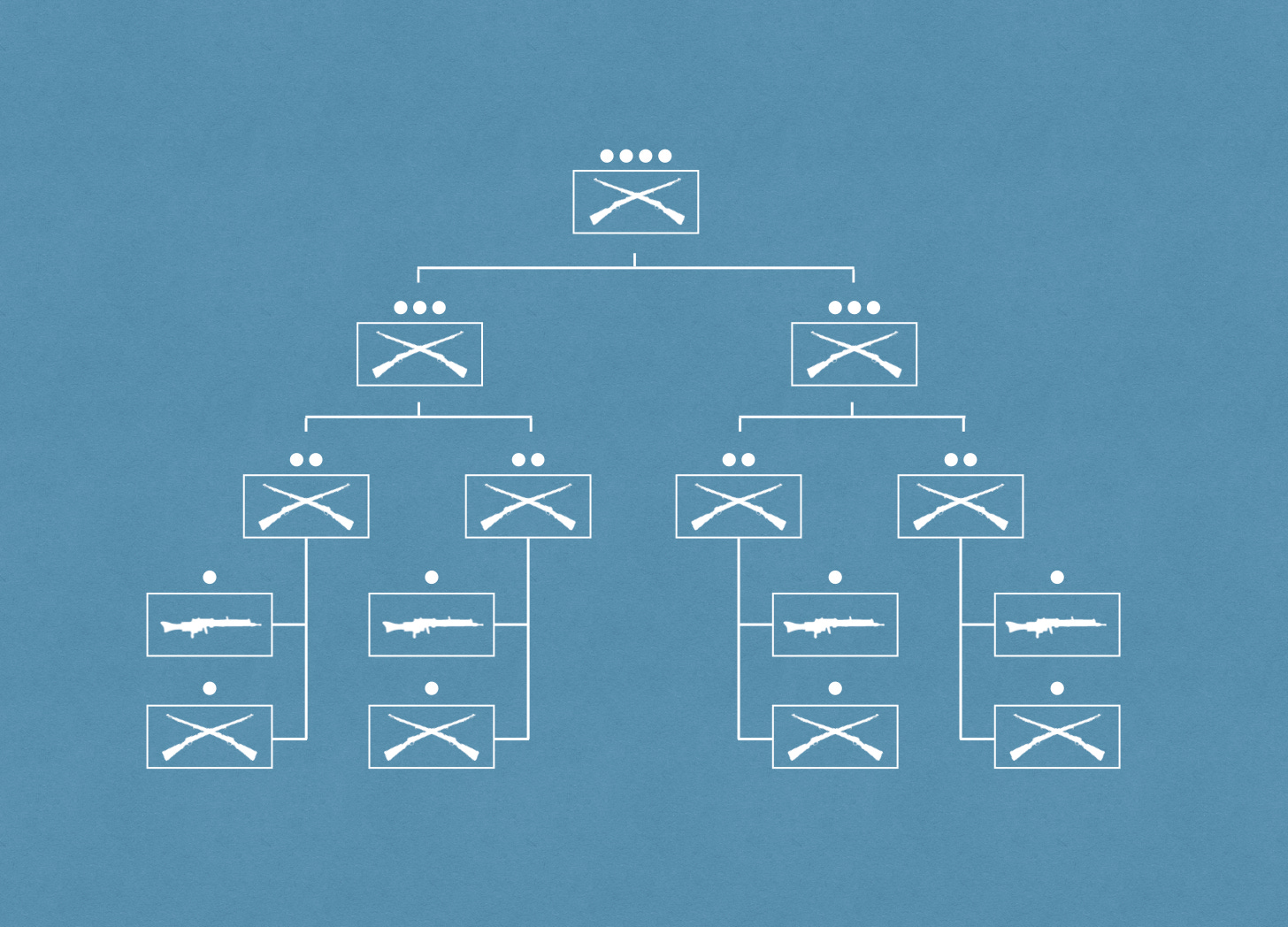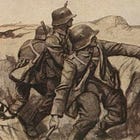The Double-Platoon Proposal of 1918
The Structure of a Private Army
On Boxing Day of 1918, the commanding officer of the Special Purpose Assault Detachment [Stosstrupp-Abteilung zur besondere Verfügung] of the Baltic Landeswehr drew up a proposal for the organization of his unit.
The smallest unit is the squad [Gruppe], which consists of a squad leader and eight men; the squad leader should be a sergeant [Feldmeister].
Two squads form a half-platoon [Halb-Zug] under a senior sergeant [Ober-Feldmeister]. The half-platoon should be armed with a light machine gun (or, if a light machine gun is not available, a heavy machine gun.) The half-platoon serves as the basis for the forming of security detachments [Feldwachen], raids, and the like.
Two half-platoons come together to form a platoon. The platoon thus consists of four squads and two machine guns.
The platoon leader should be a subaltern officer (second lieutenant, cornet). Supernumerary platoon leaders, who wear a single star on their collars, rank as platoon leaders. However, they receive the pay of squad leaders.1
Two platoons make a double-platoon [Doppel-Zug], under a fully-fledged [etatsmässig] platoon commander (cornet or first lieutenant).2 The double-platoon thus has the following strength: three officers, four senior sergeants, eight sergeants, sixty-four men, and four machine guns.
Each double-platoon, which I would like to call a squadron [Schwadron], should receive a field kitchen and the customary baggage wagons (machine gun, ammunition, and food wagon).3 The leader of the double-platoon should be mounted. If possible, the platoon commanders should be mounted as well.
Source: Letter of Captain of Cavalry [Rittmeister] Bohm to the commanding officer of the Baltic Landeswehr, dated 26 December 1918 Bundesarchiv (R 8025/17) (As the folder is a large one, I have placed a copy of the letter in the Military Learning Library.)
For Further Reading:
To Share, Support, or Subscribe:
This provision, as well as the forming of small platoons, suggests that the Special Purpose Assault Detachment was well supplied with junior officers.
The rank of “cornet” had not existed in the German armies that fought in the First World War, it had been used in many Russian cavalry regiments to designate holders of the lowest commissioned rank. Thus, the two mentions of cornets in this proposal suggest that some of the officers who joined the Landeswehr had previously served the Tsar as horse soldiers.
The use of the term “squadron” to designate the double-platoons proposed by Captain Bohm may reflect more than nostalgia for his days on horseback. In the German armies of 1914, cavalry squadrons were much smaller than infantry companies. (Where the former consisted of a hundred and fifty “sabers”, the latter rated two hundred and fifty “rifles.”) The ratio of officers to enlisted men was also much higher in cavalry squadrons than in infantry companies. (Where a cavalry squadron rated one officer for every thirty-two men, an infantry company was authorized one officer for every sixty-two men.)









I think given modern technology and our situation God is on the side of big… squads.
Probably platoons.
I also think the British are correct to favor experienced small unit leaders, with Captains commanding platoons and Majors Companies. There needs to be training of platoon leaders and it doesn’t happen, we’re stuck with some mad system of putting the least experienced officers where it matters the most. Or utterly inexperienced. Now I have done this job and in modesty succeeded, but it’s utterly irresponsible to continue with 18th/19th century concepts now.
Probably the concept of the subaltern/green platoon leader was always a mistake.